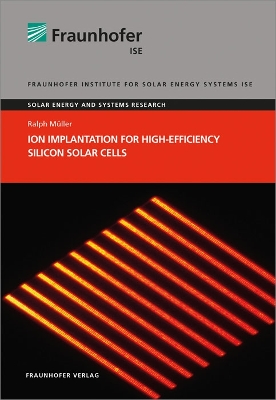Solare Energie- Und Systemforschung
1 total work
The profitability of the whole photovoltaic system can be effectively increased by the use of advanced silicon solar cells with a higher conversion efficiency potential and new technologies are needed to keep the fabrication effort low. Ion implantation allows for single side and even patterned doping of silicon wafers, so this technique could help to simplify the process chain of complex high-efficiency silicon solar cells.
In this thesis, the suitability of ion implantation for the fabrication of modern solar cells was investigated. The implantation of mass-separated boron or phosphorus ions and subsequent furnace annealing was used to study the charge carrier recombination due to implantation defects and obtain doping profiles for an evaluation at the device level. Furthermore, novel process sequences combining ion implantation and furnace diffusion for the simplified doping of back-junction back-contact cells were developed and evaluated with respect to the influence of a reverse breakdown and a weak front-side doping on the solar cell performance.
In this thesis, the suitability of ion implantation for the fabrication of modern solar cells was investigated. The implantation of mass-separated boron or phosphorus ions and subsequent furnace annealing was used to study the charge carrier recombination due to implantation defects and obtain doping profiles for an evaluation at the device level. Furthermore, novel process sequences combining ion implantation and furnace diffusion for the simplified doping of back-junction back-contact cells were developed and evaluated with respect to the influence of a reverse breakdown and a weak front-side doping on the solar cell performance.
